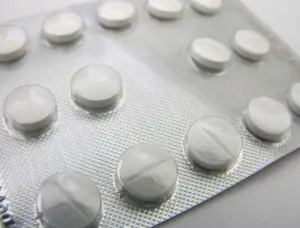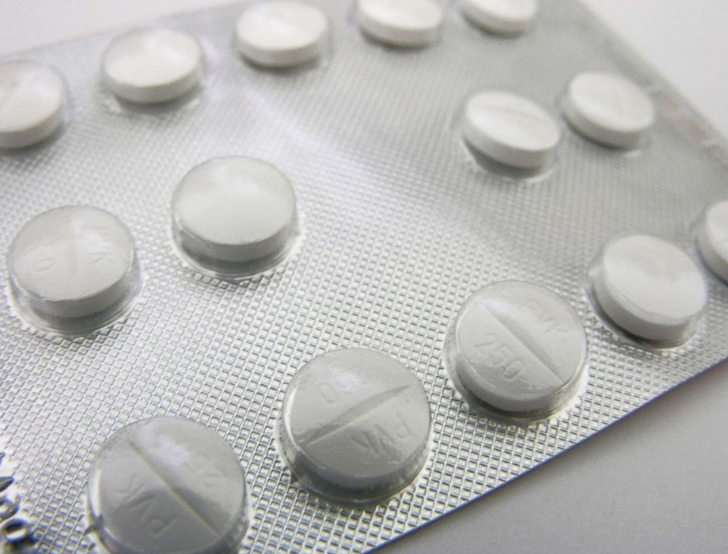Penicillin is the beta-lactam antibiotic that is used for the bactericidal effect of gram-positive bacteria. It directly targets the cell wall of bacteria and inhibits the synthesis of the cell wall. As it is used to treat the disease caused by gram-positive bacteria so this is recommended as a narrow spectrum antibiotic. Penicillin contains a beta-lactam ring that is responsible for its activity.
History:
Penicillin is the first antibiotic that was discovered by Alexander Fleming. Penicillin is naturally synthesized by a fungus, Penicillium chrysogenum. He grew the staphylococcus on the agar plates. He separated the pure colonies of Staphylococcus from boils, sore throat samples. Then, he went for the holidays. When he returned from the holidays, he observed that there is a clear zone of inhibition of bacteria where the hyphae of fungus grew. He isolated the fungus metabolite that kills the bacteria and named as penicillin. Penicillin has the bactericidal effect that kills the bacteria.
Mode of action:
Penicillin is a cell wall inhibitor. The cell wall is composed of peptidoglycan subunits. This peptidoglycan is the polymers of sugar and amino acids. The sugar N-acetylglucosamine and N- acetylmuramic acid linked with the amino acids. Three to five peptide chains linked the sugar and protein together. These polymers combine to give the structure of the bacterial cell. Peptidoglycan creates a mesh-like appearance that prevents the extracellular component to move inside the cell. Penicillin works by targeting the peptidoglycan. Penicillin attacks the peptidoglycan subunit of the cell wall. The cell wall breaks that leads to the weakening of the cell. When bacteria multiply, small holes create that are not fill by peptidoglycan. The weak cell wall can’t support bacterial growth. Bacteria live in a watery environment and water moves inside the cell. When water enters, bacterial cell burst and die.
Industrial preparation of penicillin:
For the industrial preparation of penicillin, there are many steps that are as follows:

Isolation of pure culture:
The pure culture can be obtained either from the environment or from American type culture collection (ATCC). After getting the pure culture, microscopy is done by making the smear. The smear is stained by using cotton blue stain. It stains the fungal hyphae and then it can be visualized under the microscope. On microscopy, the features that are observed under the microscope are as follows:
- There is no foot cell present on the hyphae.
- The hyphae are septate and the hyphae are unicellular.
- The branching conidia are present in the hyphae.
- Square or rectangular metulae is present on the conidiophore.
- The metulae contains the phialids in which spores are attached.
- The spores that are present on conidiophore are called conidiospores.
- There is the presence of yellow pigmentation on the reverse side of the colony.
Physico-chemical optimization of fungus:
Physico-chemical optimization includes the optimization and conditions in which the fungus gives the best yield. The antibiotics are produced in the stationary phase of the growth phase. Antibiotic is the secondary metabolite of the fungus. The stationary phase is the phase in which the bacteria death also occur. During this phase,
- No net increase or decrease in cell number
- The number of division is equal to the number of cell death
- Available of limited nutrient
- Lack of space in the culture
- Preparation of secondary metabolites
- Due to the storage of granules, variable staining is done.
Penicillin is produced extracellular from the cell. The physical optimization include the
- Temperature
- pH
- osmotic pressure
- water activity
- redox reaction
The fungus grows best at room temperature, with acidic pH and in 0.9% water activity. Molds are highly aerobic that grows in the presence of oxygen.
The chemical optimization include the
- Presence of macromolecules
- Presence of micro-molecule
- Presence of trace elements.
These elements are necessary for the fungus to biologically synthesize their biomolecules. The biomolecules includes DNA synthesis, protein synthesis, fatty acid synthesis and etc.
Selection of fermentation media:
The fermentation media is used for the mass culturing of mold that is responsible for the production of penicillin. The fermentation media must have following properties
- It should be inexpensive and cheap.
- It should contain all the elements responsible for the growth of fungus.
- It should be non-toxic and non-carcinogen to the mold.
- It should not chemically react with the product of fermentation.
- It should support the growth of mold.
- It should provide good yield.
Molasses is used for the production of penicillin as it is cheap and gives high yield.
Mass culturing of penicillin:
For the mass culturing of mold, the bio-fermenters are used. Bio-fermenters are the apparatus that are stable and used for the mass culturing of mold. All the programs in the bio-fermenters are synchronized and automated. Phenyl acetic acid is the precursor of penicillin and it is added in limited amount because, high amount of PAA reduce the yield of penicillin. The filter air is provided to the bio-fermenters with the help of spargers. As the molds are aerobic, they need high rate of oxygen for proper growth. Proper agitation is also required for the growth so that nutrient is mix in the whole bio-fermenters. The growth of the penicillin is optimized and then fungus is allowed to grow. After the proper time, the growth stops and penicillin is obtained.
Penicillin extracted:
Penicillin is excreted from the cell and present in the cell supernatant. The molds are filtered to obtain all the cell-free supernatant. Penicillin is extracted at low pH. For this purpose, the cell-free supernatant is treated with sulfuric acid. The penicillin is degraded at low pH so immediately the supernatant is treated with sodium hydroxide. The sodium penicillinate is then synthesized by the reaction of penicillin with sodium hydroxide. Then, penicillin is extracted from the sodium penicillinate solution by dissolving it in chloroform solution. The penicillin is dissolved in the chloroform as they both are organic solvents.
Production of other penicillin:
The other penicillin is obtained by changing the side chain of beta-lactam rings. The alternation in the side chain generates the synthesis of new antibiotics.
Types of penicillin:
There are five types of penicillin that are used nowadays for the prevention of disease.
- Natural penicillin
- Amino-penicillin
- Urido-penicillin
- Beta-lactamase resistant penicillin
- Carboxy-penicillin
Their spectrum increase when new antibiotics groups are discovered.
Resistance against penicillin:
But nowadays, bacteria are resistant to antibiotics. Mostly gram-negative bacteria are resistant to penicillin and penicillin don’t act on them. There are two types of resistance in bacteria.
- Natural resistance is the type in which the bacteria are naturally resistant to the antibiotics. It is non-transferable to the other bacteria. For example; gram-negative bacteria have small peptidoglycan content, so penicillin doesn’t work on them.
- Acquired resistance is the type in which bacteria acquired or adapted resistant from the environment. When antibiotics are used for the long term, the bacteria become resistant to them. This resistant is transferable to other bacteria and most of the bacteria acquired resistant from the misuse of antibiotics.
Resistance mechanism:
There are three commonly resistant mechanisms that are adapted by gram-positive bacteria for survival.
Penicillinase enzyme:
Bacteria synthesize the Penicillinase enzymes that degrade the penicillin ring. Penicillin antibiotic activity depends on the beta-lactam ring. When the ring are broken by enzymes, its activity stop and bacteria survive in the environment.
Modified target site:
Antibiotics always work by binding to its target site. Bacteria change its target site for the antibiotics. When the target sites are changed, antibiotics are unable to bind with them. The unbinding of antibiotic with the target site destroys the effect of the antibiotic.
Efflux pump:
Bacteria have some modified proteins that pump the penicillin out from the cell. when penicillin moves out, bacteria survive and able to grow.


I don’t think the title of your article matches the content lol. Just kidding, mainly because I had some doubts after reading the article.